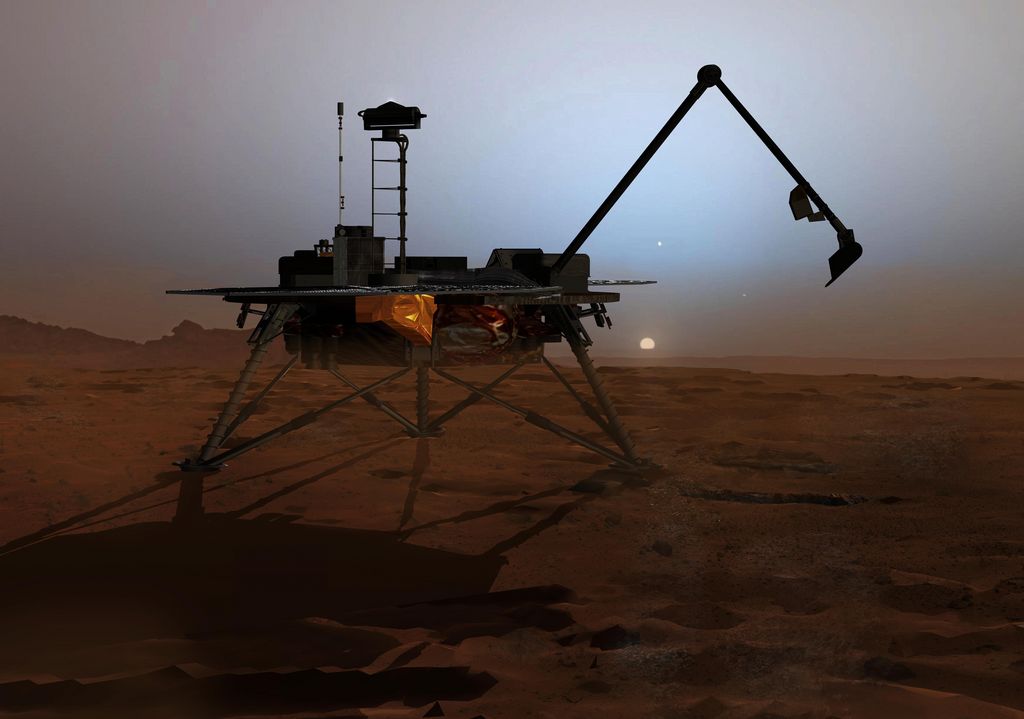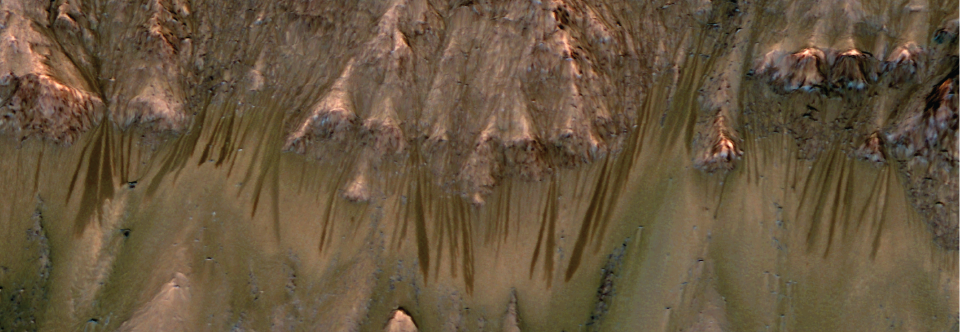
More than 50 of the world’s top Mars scientists gathered in Royce Hall last week to discuss whether life could survive on the red planet. Three dozen talks over two days covered topics ranging widely from the current liquid water activity on Mars to NASA’s planetary protection policies.
“The habitability of Mars is a pressing issue because we plan to send humans there in the next century,” said David Paige, a UCLA professor of Earth and space sciences and a co-organizer of the conference, held Feb. 4-5. “To do that in a responsible way, we should take into account that there could be an indigenous biosphere on Mars, and do our best to predict what would happen to any terrestrial organisms we might bring with us.”
Life is almost everywhere we look on Earth, but that’s not true for inhospitable Mars. Andrew Schuerger, an astrobiologist from the University of Florida and speaker at the conference, went so far as to list 17 separate environmental hazards that could freeze, irradiate or otherwise disrupt microbial life on the surface of Mars. Topping the list: powerful, microbe-frying, ultraviolet light from the sun; sub-zero temperatures; and a thin, oxygen-less atmosphere with pressure levels 100 times lower than those found on Earth.
Nonetheless, Schuerger and his colleagues have made it their mission to find the hardiest bacteria surviving in the harshest environments on Earth and to determine whether the tiny microorganisms could grow in Mars-like conditions. His search was rewarded with the discovery of several hypobarophiles, microorganisms that can grow in extremely low-pressure and low-temperature environments. While some of these single-celled survivors hail from the Canadian Arctic or the depths of Siberia, others live closer to home: Schuerger was particularly surprised to find hypobarophiles in a sample he took of human saliva.
Yet even the sturdiest of the hypobarophiles would shrivel without a stable source of liquid water, said Schuerger. While liquid water may be hard to come by on the Martian surface, there is plenty of evidence that water exists beneath the surface, according to Alfred McEwen, a planetary geologist from the University of Arizona.
First discovered from images taken by the Mars Reconnaissance Orbiter in 2011, Recurring Slope Lineae (RSL) are dark streaks that slowly creep down sun-facing crater rims and canyon walls during the Martian spring and summer and then fade in winter. The flow of liquid water, mixed with Martian salts several centimeters beneath the planet’s surface, may be responsible for tracing the finger-like patterns, though the source of the water is still unknown.

“The exact mechanism is not well understood,” said McEwen. “Given the seasonality and temperature dependence, we think a volatile must be involved, and briny water is the best candidate.”
While the formation of RSL may look remarkably like streaming water on Earth, McEwen is quick to put aside the notion, emphasizing that, on Mars, the trickle of briny water takes weeks to flow downhill and behaves more like “maple syrup slowly oozing down the slope.”
While liquid water on Mars may be subsurface and salty, one of the largest questions the conference dealt with was the role of perchlorate, a high-energy molecule toxic to most kinds of life.
In 1976, twin Viking spacecraft landed on the surface of Mars and analyzed the composition of Martian soil for signs of past or present life. Viking found only a single organic molecule, which the science team dismissed as a remnant of cleaning products used on Earth prior to launch. However, in 2008, an experiment onboard the Phoenix lander surprised scientists when it indicated the presence of perchlorate.
“Perchlorate is a double-edged sword,” said Paige. “It is a reactive molecule that destroys organic molecules, yet we find a variety of organisms on Earth that, in fact, use it to survive.”
If perchlorate, a common component in pyrotechnics and rocket fuel, was present in those early Viking samples, it may have completely destroyed any interesting organics the experiment was meant to measure. A reanalysis of the Viking results published more than 30 years later revealed that the single organic molecule the experiment detected was not the result of Earth-based contaminants as originally suspected, but instead the predicted byproduct of a perchlorate reaction.
“This could be a very exciting explanation for the Viking results that showed no organic molecules except one that could easily be residue from the combustion of perchlorate and organics,” said Paige. “This opens up a whole new set of possibilities that just weren’t there before the perchlorate molecule was discovered on Mars.”
Strong among these possibilities is the fact that perchlorates can draw atmospheric water vapor into liquid form. Liquid water produced in such a way on Mars could potentially provide hydration for microbes capable of surviving in the presence of the reactive perchlorate molecules. Just as important, when perchlorate mixes with water on Mars, it forms salty brine that freezes at a much lower temperature than pure water, which extends the range of potentially habitable conditions on Mars.
Solving the puzzle of whether life could survive in the harsh and varied environments of Mars requires a community of scientists from across many disciplines, said Paige.
“Many different types of scientists are involved, from researchers who study orbital images to biologists who grow microorganisms in petri dishes, and everyone in between,” he said. “To get such a diverse community together was a lot of fun.”
The conference, sponsored by the UCLA Institute for Planets and Exoplanets (iPLEX), the NASA Astrobiology Institute and the UK Centre for Astrobiology, is the first iPLEX meeting to be open for virtual participation. Nearly 50 participants watched the conference online, asking speakers questions via webchat. Nine talks were given remotely by speakers located as far away as the United Kingdom, Hungary and Russia.
iPLEX aims to advance research into planetary systems around the sun and other stars by facilitating interdepartmental collaboration. It is a joint venture bridging the interests of researchers in the departments of Earth and Space Sciences, Physics and Astronomy, and Atmospheric and Oceanic Sciences.
All conference talks were recorded and archived online; they can be streamed for free by the public from the conference website.
Follow Iplex